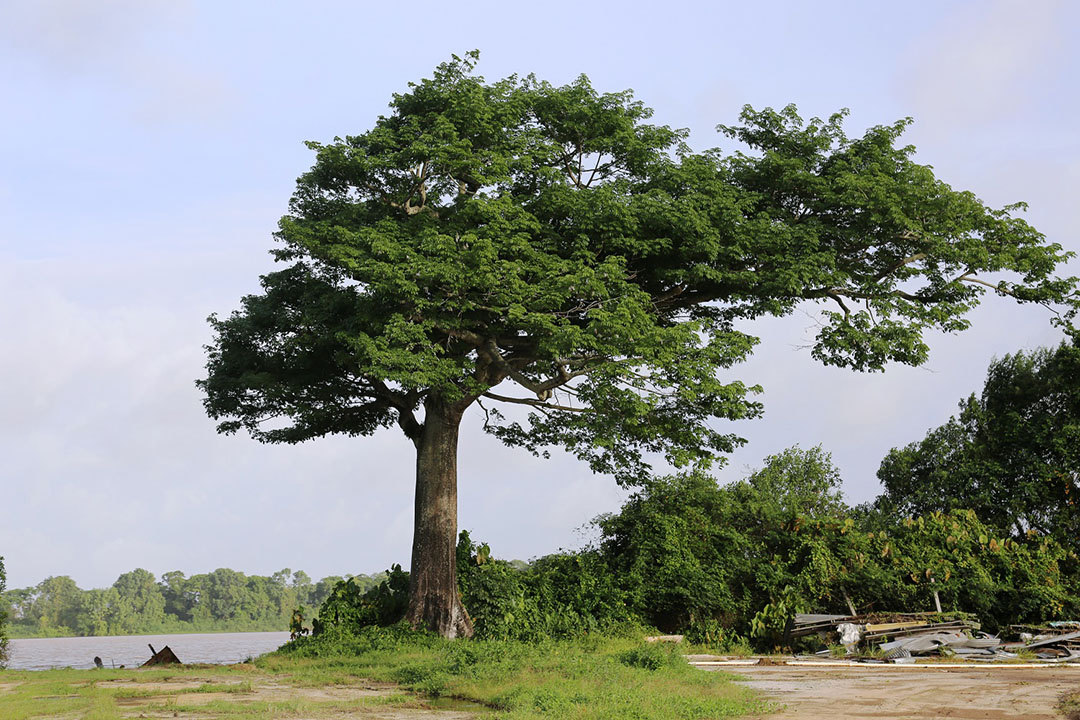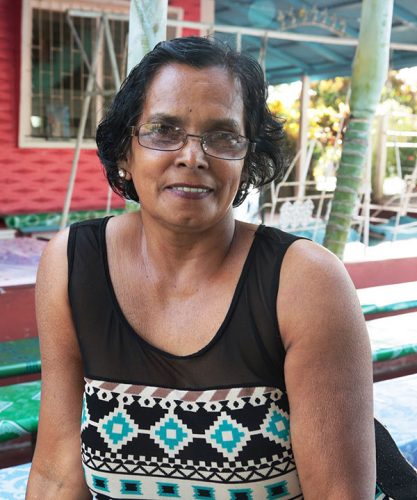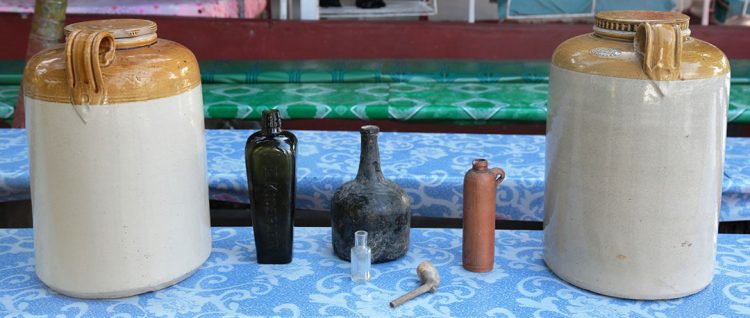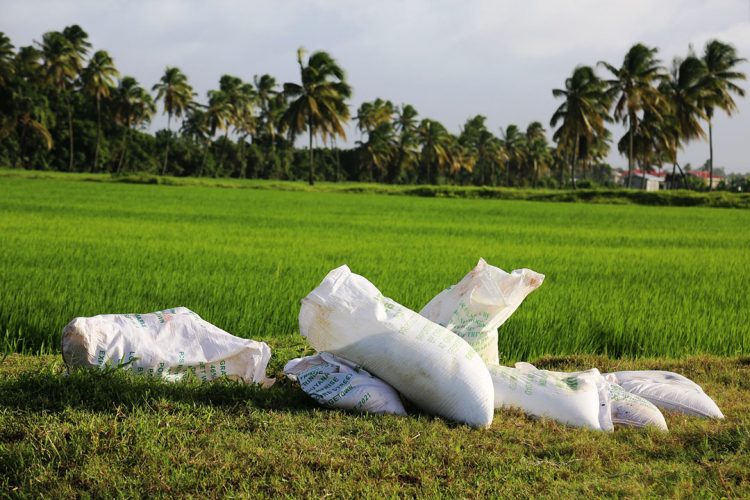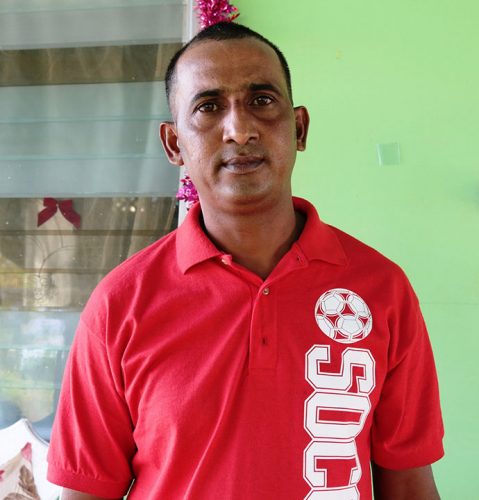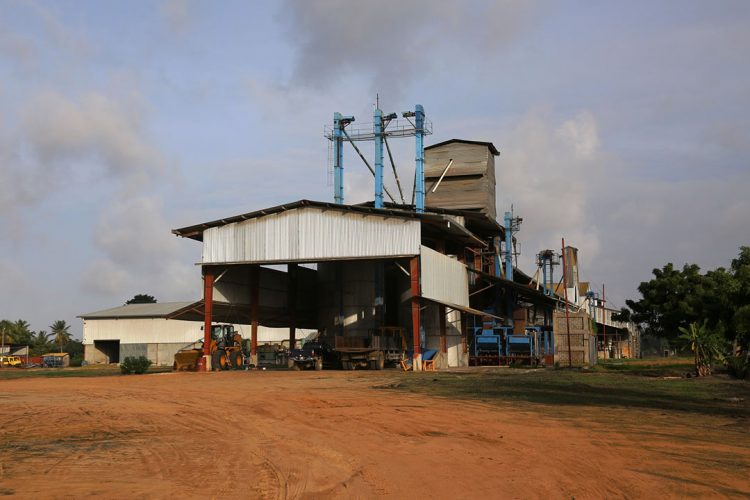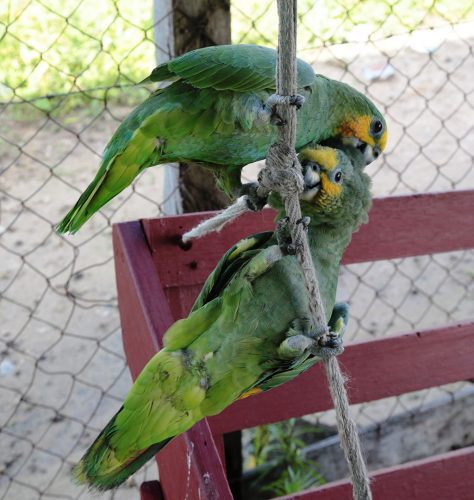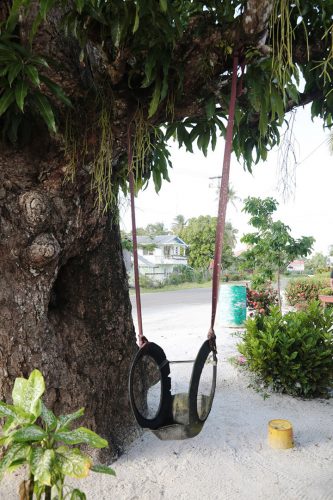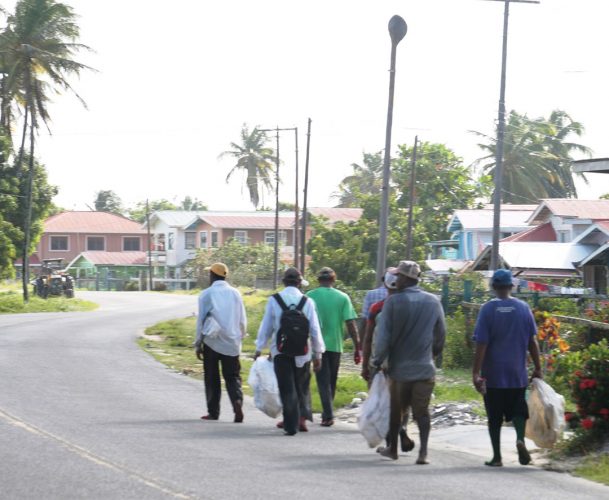Vilvoorden, Essequibo Coast is a small community of just more than 100 people, approximately nine kilometres from the Supenaam Jetty and between Middlesex and Fairfield. The name Vilvoorden is said to be of Dutch origin. The village was once called Plantation Vilvoorden, and it was a sugar cane estate that thrived where rice grows today.
The rains had been visiting every day, sometimes all day but on this day the sun overcame its rival with the dark clouds hanging in its path.
Latchman Bhodnarine was relaxing in his hammock with his parrots nearby as he waited for his chicken curry, which was on the stove, to finish cooking. He had just returned from Diamond, East Bank Demerara where a relative of his wife had died. Bhodnarine left his family behind as he needed to return to his work. The contractor said that usually this time of the year is his busiest.
We had barely begun when Bhodnarine’s curious parrots came over to inquire about my shoes pecking at them, but he shooed them away.
Bhodnarine was originally from Hibernia, three villages away, and moved to Vilvoorden with his wife, a local, 21 years ago. At that time, he recalled having to get water from the well in their yard. Today, water flows through the taps inside their home, though he did say that it is not treated as it has a high iron content. Electricity is also improved as back then, they got electricity at intervals. He said the village has come a far way since the days of its red-brick/rubbish road.
Bhodnarine has three children who are no longer of school age. They attended Aurora Primary and Abrams Zuil Secon-dary since the village has no school. The children here attend the same schools as well, though most go to Huis T’ Dieren Nursery and Primary and a few attend Anna Regina Multilateral, the top secondary school on the Essequibo Coast.
For these children, there is no playground except for the Huis T’ Dieren/ Pomona Community Centre Ground which the villages around share; they tend to play in their yards.
Headmaster of Great Troolie Island Primary School (situated on Great Troolie Island, in the Essequibo River opposite Buck Hall) Juste Ramdas was in the middle of cleaning his car when I showed up.
Ramdas, who hails from Vilvoorden, has always been one for adventure and history and as a boy, most of his social time was taken up discovering all he possibly could about the Dutch and his village.
He shared that Vilvoorden at one time had four enormous silk cotton trees which were the demarcation of the boundary of a Dutch port. “In our teens we used to go about frolicking between the old broiler rooms and fruit trees that the old plantation owners would have planted. We used to go around looking for these Dutch bottles, we’d dig for them. We used a meter of a 3/8” steel rod with a piece of corkwood or wood from the tricel [sp] for a handle. We’d pierce the ground listening for a particular sound…,” Ramdas said.
He said he has learnt that Plantation Vilvoorden was owned by two Chinese sisters, the Chungs. They had transformed Vilvoorden to a coconut plantation. Unfortunately, one of the sisters was chopped to death by a handyman and the other sister was believed to have later succumbed to grief. Most of the land was sold.
According to Ramdas, people in the village, mostly the older ones are under the perception that anything touched by the Dutch is evil, and so they stay away. There are old rumours that people who used the Dutch bottles to store water died because the water they poured into the bottles became poisonous. Ramdas preferred to find out the truth about this firsthand, so he poured wine into one of the Dutch bottles and took a sip; that was years ago.
Apart from Ramdas’s daring and adventurous spirit, his childhood experiences, he said, were “good” and “rough”. He was exposed to nature rather than cooped-up in front of the television, the way children are today. The creeks and trees were part of his playground; trees were termed “dangerous” as they often hid swarms of bees.
“We lived loving among ourselves as neighbours, even today. We live a very simple life, simple in the sense that every day we look forward to a new blessing and always reach out to each other.”
The people of Vilvoorden are rice/cash crop farmers, labourers, teachers, nurses, mechanics and housewives. They share their resources Ramdas boasted whether it be fruits or greens or fish or even social events; the work and fun belong to all.
However, they are affected by the disadvantages of poor internet, little or no entertainment at all and very little employment when it comes to finding high-end jobs.
“I would like a wider road with less turns,” said Ramdas regarding developments in his village. “Vilvoorden would like to have a playground/recreational facility that caters for everyone be it in the cricket or football or basketball or tennis area. It’d also be good to have a museum along the coast and Vilvoorden would be the ideal place for one. We’d showcase not just our Dutch artifacts but also craft from here on the coast and those coming from North West.”
Inside the house, his mother Angela Ramdas was busy with the usual chores. Over the holidays, she had hosted her annual ‘Angela’s Village Party’ for the less fortunate children and senior citizens. Angela excitedly shared that last year’s party was the 24th in as many years; the first, in 1994, was attended by the then minister Manzoor Nadir who made his second visit at the last year’s. The village party, Angela noted, came about after women like herself from her village wanted to give back to their community. From their pockets they sponsored everything: food, drinks, presents, decorations and invitations. They didn’t limit them to just the people in the village but sent out invitations to those as far as the creeks in Supenaam and beyond at Adventure Sand Top. This year saw a record-breaking more than 360 people attending. Angela said they had only sent out 240 invitations, expecting no more than 300, yet managed to cater for everyone. “The beautiful thing is that God see that we had enough,” she said.
